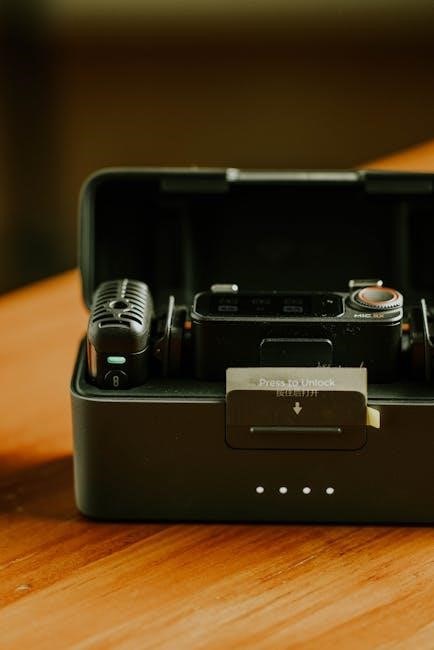Welcome to the NOCO Genius Battery Charger Manual, your comprehensive guide to understanding and using the NOCO Genius series of smart battery chargers. Designed for 6V and 12V lead-acid and lithium-ion batteries, these chargers offer advanced features like automatic charging, maintenance modes, and desulfation. This manual will help you optimize performance, ensure safety, and troubleshoot common issues for a seamless charging experience.
Overview of the NOCO Genius Series
The NOCO Genius Series offers advanced, user-friendly battery chargers designed for 6V and 12V lead-acid and lithium-ion batteries. Models like the GENIUS10, GENIUS5, and GENIUS1 provide efficient charging, maintenance, and desulfation. They support various battery types, including flooded, AGM, gel, and LiFePO4, ensuring versatility for automotive, marine, and deep-cycle applications. These chargers deliver smart, automatic charging with multiple modes, making them ideal for both novice and experienced users seeking reliable battery care.
Importance of Reading the Manual
Reading the NOCO Genius Battery Charger Manual is essential for safe and effective use. It provides critical safety precautions, product specifications, and usage guidelines. Understanding the charger’s features, such as charging modes and battery type compatibility, ensures optimal performance. The manual also offers troubleshooting tips and maintenance advice to extend battery life. Proper usage prevents damage and hazards, making it a vital resource for all users.
Key Features of the NOCO Genius Battery Charger
The NOCO Genius Battery Charger offers advanced charging technology with multiple modes for various battery types. It features automatic voltage detection, overcharge protection, and efficient charging algorithms. A bright LCD screen displays real-time charging status, while its compact design ensures portability. Compatibility with AGM, lithium, and other battery chemistries makes it versatile for cars, trucks, and recreational vehicles, ensuring safe and efficient charging every time.
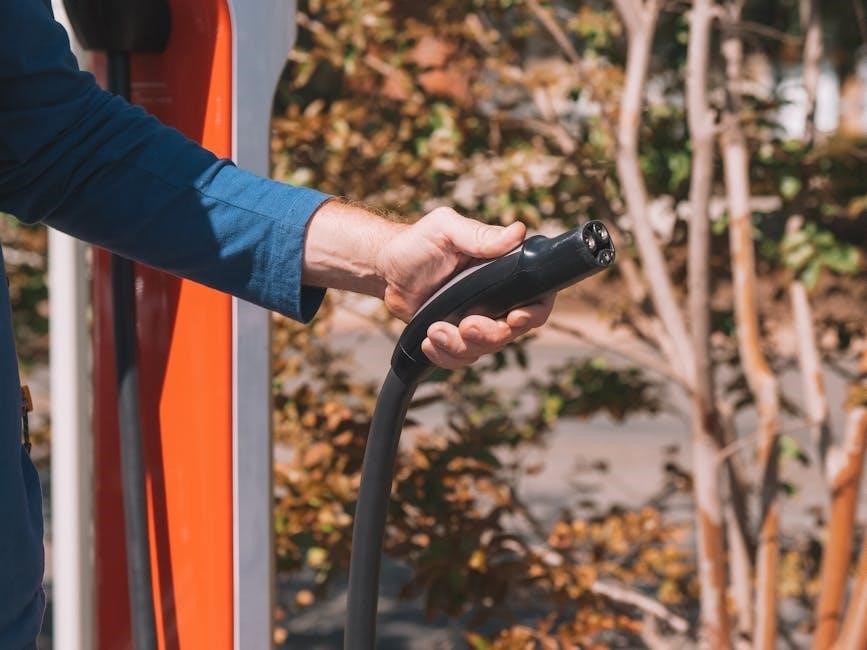
Safety Precautions and Warnings
Always wear protective gear and ensure proper ventilation. Keep the charger away from flammable materials and follow connection procedures to prevent electrical hazards and maintain safe operation.
General Safety Guidelines
- Always wear protective gear, including gloves and goggles, when handling batteries and chargers.
- Ensure the charger is placed on a stable, heat-resistant surface away from flammable materials.
- Never overcharge batteries, as this can cause damage or safety hazards.
- Keep the charger away from water or moisture to prevent electrical shock.
- Follow all instructions carefully to avoid improper connections or operational errors.
Important Warnings for GENIUS10 Users
- Avoid overcharging, as it can damage the battery or reduce its lifespan.
- Never connect the charger to a battery with loose or corroded terminals.
- Ensure the charger is set to the correct battery type and voltage.
- Do not modify the charger or use unauthorized accessories.
- Keep children away from the charger and battery during operation.
- Store the charger in a cool, dry place when not in use.
Proper Ventilation Requirements
Ensure the charger is used in a well-ventilated area to prevent hydrogen gas buildup during charging. Avoid enclosed spaces or areas with poor airflow. Keep the charger away from open flames or sparks. Proper ventilation reduces explosion risks and ensures safe operation. Follow manufacturer guidelines for ideal operating environments. Always prioritize airflow to maintain safety and efficiency while charging batteries.
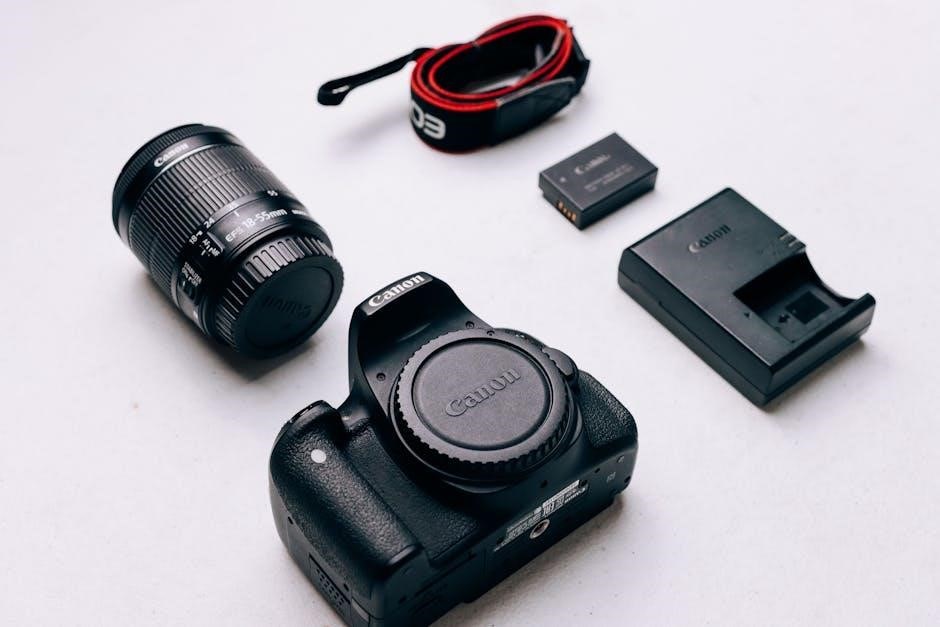
Product Specifications
Product specifications detail the technical features of NOCO Genius Battery Chargers, including supported battery types, charging modes, and safety features, ensuring optimal performance and compatibility for various applications;
NOCO Genius 10 Specifications
The NOCO Genius 10 is an ultra-safe and efficient battery charger and maintainer. It supports 6V and 12V batteries, including AGM, lithium, and deep-cycle types. With a 10A charging capacity, it ensures rapid charging while preventing overcharge. The device features advanced safety protections like spark-proof technology and overheat prevention. Its compact design and intuitive interface make it ideal for both professional and DIY use, ensuring reliable performance across various applications.
NOCO Genius 5 Specifications
The NOCO Genius 5 is a versatile 5A battery charger and maintainer, compatible with 6V and 12V batteries, including AGM, flooded, calcium, and lithium types. It features spark-proof technology, overcharge protection, and thermal management for safe operation. Designed for smaller batteries, it’s ideal for cars, motorcycles, and lawn equipment. Its compact, user-friendly design ensures easy and efficient charging, making it perfect for DIY enthusiasts and professionals alike.
NOCO Genius 1 Specifications
The NOCO Genius 1 is a 1A battery charger and maintainer, designed for 6V and 12V batteries, including AGM, flooded, and lithium types. It features spark-proof technology, overcharge protection, and a compact design for portability. Ideal for small batteries in motorcycles, ATVs, and lawn mowers, it ensures safe and efficient charging. Its low current output makes it perfect for maintenance charging and storing vehicles long-term.
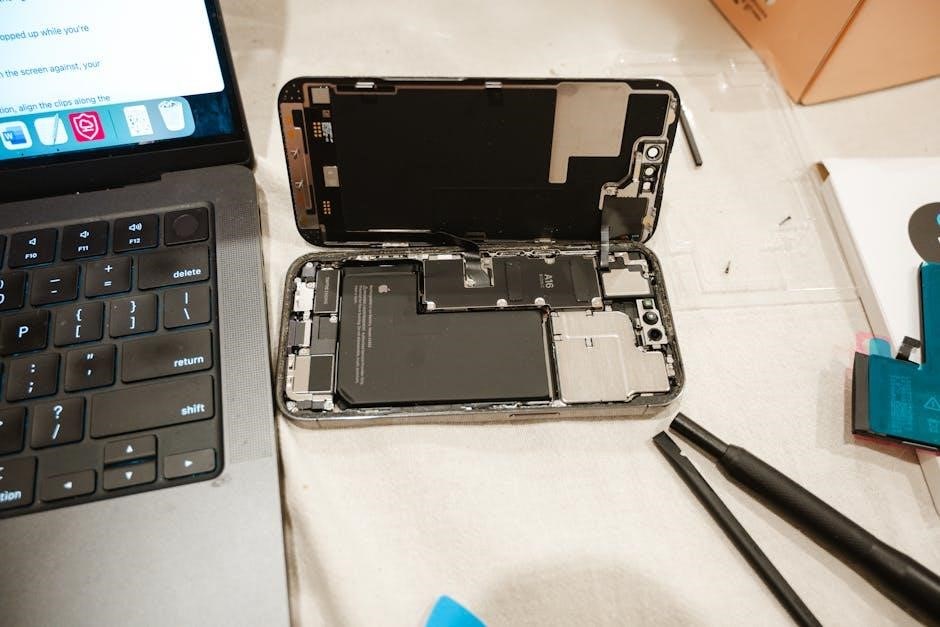
Installation and Setup
Place the charger on a stable, non-flammable surface. Ensure proper ventilation and keep it away from direct sunlight. Follow manual instructions for initial setup and connections.
Unpacking and Initial Inspection
Begin by carefully unpacking the NOCO Genius battery charger from its box. Inspect the device and accessories for any visible damage or defects. Ensure all components, such as the charger, cables, and manual, are included. Verify the charger’s condition and check for loose or damaged connections. Before use, confirm the charger is suitable for your battery type and voltage requirements.
Connecting the Charger to the Battery
To connect the NOCO Genius charger, first ensure the battery is disconnected from the vehicle. Locate the positive (+) and negative (-) terminals. Attach the charger’s DC cables to the battery, matching the polarity: red clamp to positive, black to negative. Ensure connections are secure and not loose. Double-check polarity to avoid damage. Finally, plug in the charger and turn it on. Always refer to the manual for specific model instructions.
Setting Up the Charger for First Use
Before first use, ensure the charger is fully powered on. Press the mode button to select the correct battery type (e.g., flooded, AGM, or lithium). Use the up/down arrows to adjust settings like charge rate or voltage. Refer to the manual for specific model instructions; Once configured, confirm settings and begin charging. Always ensure the charger is set to the correct battery type for optimal performance.
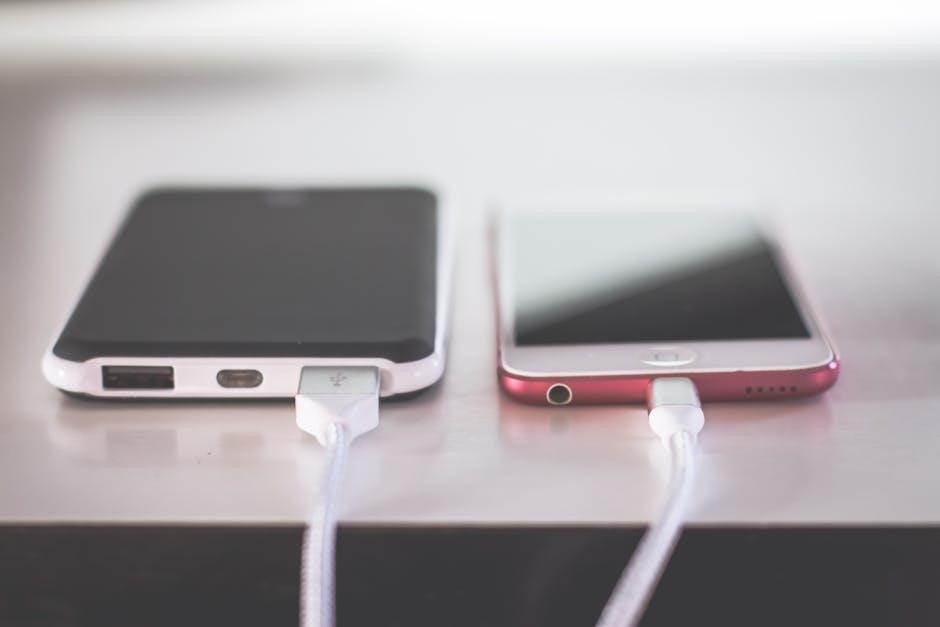
Charging Modes and Options
The NOCO Genius Charger offers multiple charging modes, including standard charge, fast charge, and maintenance modes. It supports various battery types like flooded, AGM, and lithium, with customizable settings for optimal charging performance.
Understanding Different Charging Modes
The NOCO Genius Charger features multiple charging modes tailored for specific needs. The standard mode provides a balanced charge, while the fast mode quickly replenishes battery power. Maintenance mode ensures long-term battery health by preventing overcharging. Additionally, the charger includes specialized modes for lithium batteries and AGM batteries, optimizing performance for different chemistries. Each mode is designed to deliver safe and efficient charging, adapting to various battery types and applications.
How to Change Charging Modes
To change charging modes on the NOCO Genius Charger, press and hold the mode button until the LED indicators flash. Use the up or down arrows to scroll through available modes. Confirm your selection by pressing the mode button again. The charger will display the selected mode via the LED indicators. Refer to the manual for specific button locations and mode options. Always ensure the correct mode is selected for your battery type.
Specialized Modes for Specific Battery Types
The NOCO Genius Charger offers specialized modes tailored to different battery types, ensuring optimal charging. Use the AGM mode for absorbed glass mat batteries, Lithium mode for lithium-ion batteries, and Gel mode for gel cell batteries. Deep Cycle mode is ideal for deep cycle batteries. Selecting the correct mode ensures proper charging and extends battery life. Always refer to the manual for mode recommendations based on your battery type.

LED Indicators and Status Lights
LED indicators provide real-time feedback on charging status, errors, and modes. They help monitor progress and diagnose issues, ensuring efficient and safe battery charging. Refer to the manual for specific light meanings.
Understanding the Mode LED
The Mode LED indicates the charger’s current operating status. It displays different colors and patterns to show modes like Standby, Charging, or Maintenance. A steady green light typically signifies a successful charge, while a flashing red light may indicate an error. Understanding these indicators helps users monitor the charging process and identify issues quickly. Always refer to the manual for specific color meanings and patterns.
Charge LEDs and Their Meanings
The Charge LEDs provide real-time feedback on the battery’s charging status. Each LED represents a 25% increment of the charge cycle. A yellow LED indicates charging in progress, while a green LED signals full charge. If a red LED flashes, it may indicate an error or issue with the battery. Refer to the manual for specific LED patterns and their meanings to ensure proper charging and troubleshooting. Always monitor these indicators for optimal performance.
Troubleshooting with LED Indicators
The LED indicators on the NOCO Genius charger are essential for diagnosing issues. A flashing red LED may indicate a fault, such as overvoltage or a bad battery connection. A solid red LED could signal a reverse polarity error. Refer to the manual for specific LED patterns and their meanings. Checking the LEDs can help identify and resolve common charging issues quickly and effectively, ensuring safe and optimal operation.
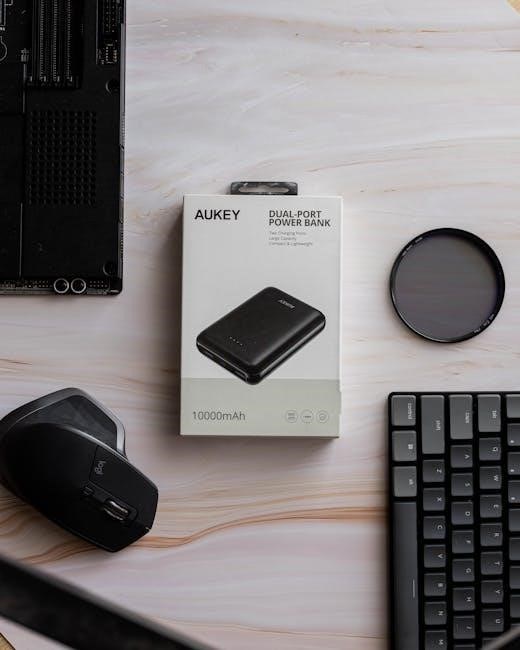
Maintenance and Care
Regular maintenance ensures optimal performance and longevity of the NOCO Genius charger. Clean terminals, inspect cables, and store the unit in a cool, dry location to prevent damage.
Regular Maintenance Tips
Regularly inspect the charger and cables for damage or wear. Clean terminals with a wire brush to ensure good connections. Store the charger in a cool, dry place away from direct sunlight. Avoid exposing it to extreme temperatures or moisture. Update the charger’s software periodically for optimal performance. Always use the correct charging mode for your battery type to prevent damage and ensure longevity.
Storage and Handling Best Practices
Store the NOCO Genius Battery Charger in a cool, dry place, away from direct sunlight and moisture. Avoid extreme temperatures and physical stress. Keep the charger upright to prevent damage. When not in use, disconnect the charger from both the battery and power source. Use the original packaging or a protective case for transport. Ensure the charger is placed on a stable, non-flammable surface during storage.
Cleaning the Charger and Battery Terminals
Clean the NOCO Genius Battery Charger with a soft, dry cloth to remove dirt or debris. For tougher stains, dampen the cloth with mild detergent, but avoid submerging the charger in water. Clean battery terminals with a wire brush to remove corrosion, ensuring a secure connection. Always disconnect the battery before cleaning to prevent electrical issues. Regular cleaning ensures optimal performance and longevity.
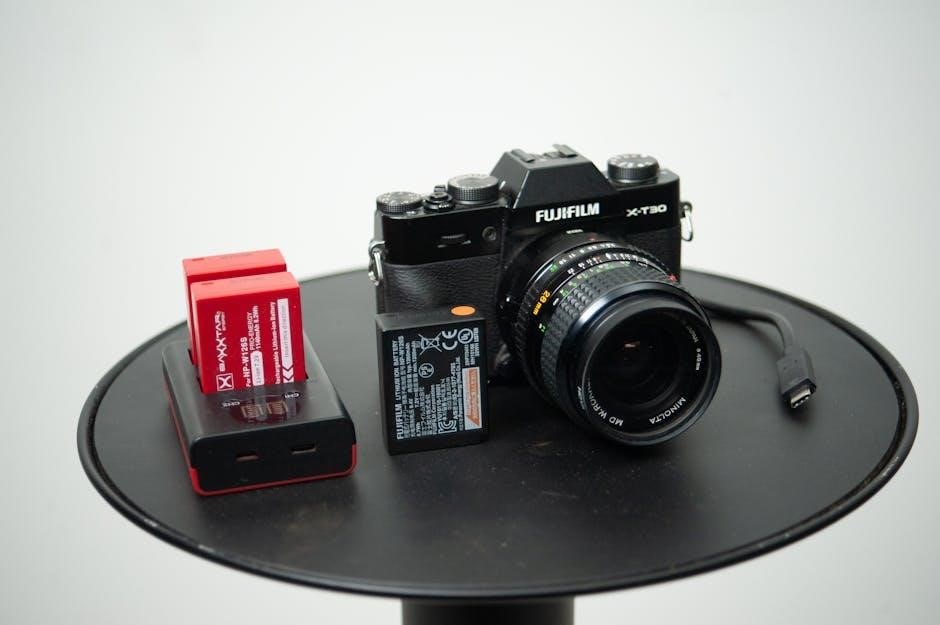
Troubleshooting Common Issues
Identify common problems like error codes or charging failures. Check connections, ensure proper settings, and restart the charger if issues persist. Refer to the manual for specific solutions.
Common Problems and Solutions
Address issues like error codes, charging failures, or the charger not turning on. Check for loose connections, ensure correct battery type selection, and verify power supply. If the charger doesn’t recognize the battery, clean the terminals. For persistent issues, reset the charger or update its software. Consult the manual for specific error code solutions and troubleshooting steps.
Diagnosing Battery Health Issues
Use the NOCO Genius charger to assess battery condition by running diagnostic tests. Check voltage levels and internal resistance to identify issues like sulfation or cell imbalance. Observe LED indicators for specific fault codes. If the battery fails to hold charge or shows irregular voltage drops, it may require replacement. Regular testing helps prevent unexpected failures and ensures optimal performance.
Resetting the Charger
To reset the NOCO Genius charger, unplug it from the power source and disconnect the battery. Wait 10 seconds to allow any residual power to discharge. Plug in the charger and reconnect the battery. Press and hold the MODE button for 3 seconds until the LEDs flash, indicating a reset. This restores default settings and resolves minor software glitches. If issues persist, contact NOCO support for assistance.
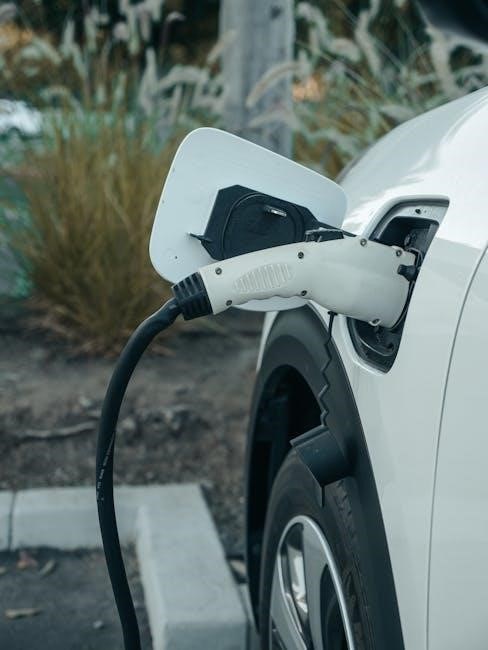
Frequently Asked Questions
This section addresses common inquiries about the NOCO Genius Charger, including compatibility with various battery types, charging time estimates, and basic troubleshooting steps for optimal performance.
General FAQs About the NOCO Genius Charger
- What types of batteries are compatible with the NOCO Genius Charger? It supports lead-acid, AGM, and lithium batteries.
- How long does it take to charge a battery? Charging time varies based on battery capacity and charger model.
- Can the charger be used internationally? Yes, it supports multiple input voltages (e.g., 100-240V AC).
- Is the charger weatherproof? No, it is designed for indoor use and should be protected from moisture.
- Does it have automatic shut-off? Yes, it includes overcharge protection for safety.
Battery-Specific FAQs
- Does the NOCO Genius Charger support AGM and lithium batteries? Yes, models like Genius 10 and 5 are compatible.
- Can it recover deeply discharged batteries? Yes, it includes a repair mode.
- How does it prevent overcharging? It uses automatic voltage regulation.
- Is it suitable for maintenance charging? Yes, it has a maintenance mode.
- Can it charge motorcycle or marine batteries? Yes, it is designed for various vehicle types.
- Does it support deep-cycle batteries? Yes, it supports deep-cycle charging.
Charger Compatibility and Usage FAQs
- Which battery types are compatible? It supports lead-acid, AGM, and lithium batteries.
- Can it charge multiple batteries at once? Yes, with optional adapters.
- What is the maximum battery size it can charge? Up to 500Ah for Genius 10.
- Does it work with vehicles’ ignition systems? No, it’s designed for direct battery charging.
- Can it be used in extreme temperatures? Yes, operating range is -4°F to 122°F.
- How long does a full charge typically take? It varies based on battery size and type.
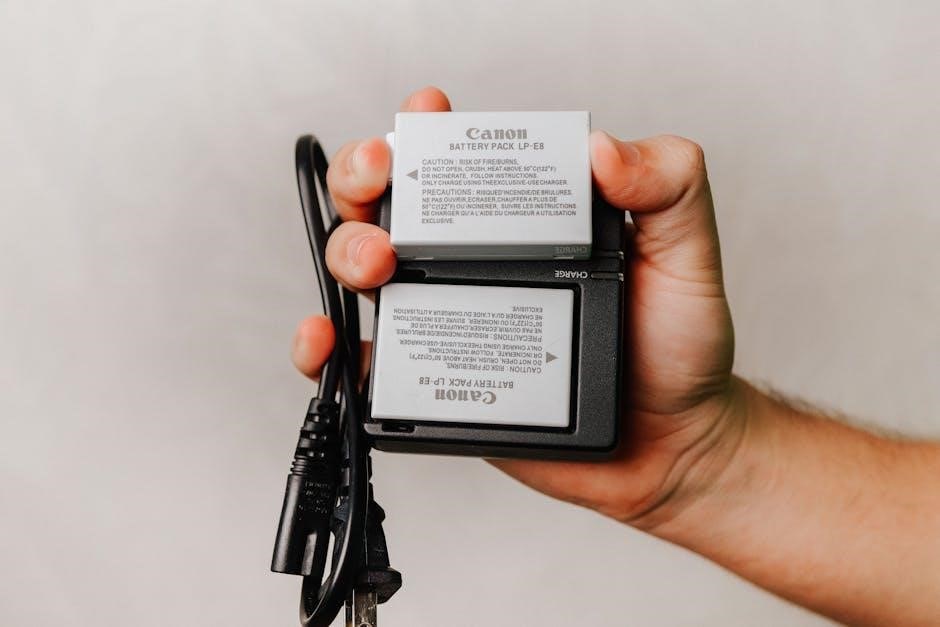
Warranty and Support Information
The NOCO Genius Charger is backed by a 5-year warranty. For support, contact NOCO via phone or online chat. Extended warranties available with registration.
Understanding Your Warranty Coverage
The NOCO Genius Battery Charger is protected by a 5-year limited warranty. This warranty covers defects in materials and workmanship under normal use. Registration is recommended to activate full coverage. The warranty does not apply to damage caused by misuse, neglect, or unauthorized modifications. For detailed terms, refer to the manual or visit NOCO’s official website. Proper usage ensures warranty validity.
Contacting NOCO Support
For assistance, visit NOCO’s official website and navigate to the support page. Submit a request form or contact their team directly via phone or email. Have your charger model number and a detailed description of your issue ready. Support is available during business hours to address troubleshooting, warranty claims, or general inquiries. Ensure to use official contact methods for reliable assistance.
Online Resources and Manuals
Access comprehensive resources on NOCO’s official website, including downloadable PDF manuals for the Genius series. These guides provide detailed instructions, troubleshooting tips, and technical specifications. Additionally, video tutorials and FAQs are available to assist with charger setup and operation. Visit the support section and search by model number or product name to find specific documentation for your NOCO Genius Battery Charger.
Mastering the NOCO Genius Battery Charger ensures safe, effective charging. Follow guidelines for optimal performance and longevity, and refer to resources for any future needs or updates.
Final Tips for Optimal Charger Use
Regularly inspect cables and connections for damage. Store the charger in a cool, dry place away from direct sunlight. Always follow safety guidelines to prevent accidents. Keep the charger firmware updated for enhanced performance. By adhering to these practices, you’ll ensure longevity, safety, and reliability in your NOCO Genius Battery Charger, maximizing its effectiveness for all your battery needs.
Encouraging Proper Usage and Maintenance
Consistent maintenance ensures the charger operates efficiently. Regularly clean terminals to prevent corrosion. Store the device in a dry, cool environment to preserve its longevity. Always follow the manual’s guidelines for charging different battery types. Scheduling periodic inspections helps identify potential issues early. Proper usage and care not only extend the charger’s lifespan but also ensure reliable performance for years to come. Stay proactive to maintain optimal functionality.
